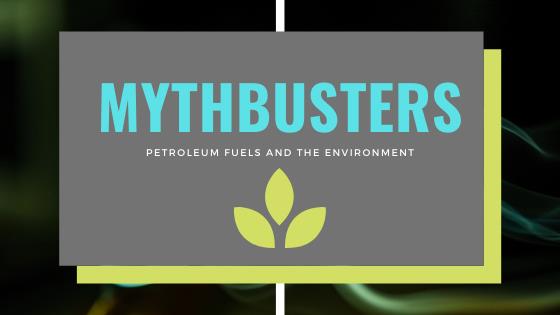This is the third in a series of posts addressing common myths about refining and transportation fuels. In this entry, let’s address some of the misconceptions about the environmental performance of the internal combustion engine.
Myth: The internal combustion engine (ICE) is yesterday’s technology with no more to offer in the drive to reduce transportation-related greenhouse-gas (GHG) emissions.
Fact: The ICE offers immense potential to help further reduce emissions.
Recent advances in vehicle-fuel efficiency are responsible for some of the most substantial contributions to emissions reductions, even as transportation demand—and fuel consumption—has increased. Those gains are due primarily to refinements in the internal combustion engine (ICE). Scientists and engineers around the world see significant opportunities to get more fuel efficiency from ICE-powered vehicles. Experts also see improvements in mainstream ICE technologies as promising the greatest short-term reductions in fuel consumption and GHG emissions. In its September 2019 editorial, the International Journal of Engine Research (IJER) wrote that, “…even today, IC engines are undergoing continuous further improvement. These developments make it even more challenging for competing technologies to gain advantage over the IC engine.”1
As with most stories of progress, ICE refinement is about a variety of small yet meaningful advances rather than any single breakthrough. Let’s take a look at a few examples.
Incremental progress
Researchers at the University of Waterloo have developed a cost-effective and fully variable valve system that has the potential to increase ICE fuel efficiency by more than 10%. The technology “replaces cams with hydraulic cylinders and rotary hydraulic valves that enable fully variable timing as the speed and torque of an engine change.”2
Nissan’s VC-Turbo engine, introduced in 2019, is the world’s first production-ready variable compression-ratio engine. Engine uses an innovative multi-link system that self-adjusts to deliver the optimum compression ratio. A high compression ratio gives greater efficiency, while a low compression ratio boosts power and torque. Nissan claims that this variability enables the engine delivers a 35% improvement in fuel efficiency over the previous V6 version.
Toyota’s 2.5-liter, four-cylinder Dynamic Force engine delivers a thermal efficiency of approximately 40%, which means a 10% reduction in the loss of heat energy. Designers called on a variety of improvements, including a longer stroke, high compression ratio, multi-hole fuel injectors, intelligent variable valve timing, and direct injection. An added benefit: a 26% improvement in fuel economy over the previous engine model.
Combining the best of diesel and gasoline engine technologies
Mastering Homogeneous Charge Compression Ignition (HCCI) has eluded carmakers for years because the technology tends to deliver benefits only at low loads—when idling or cruising, for example. Mazda’s SKYACTIV-X engine marks a breakthrough by using what the company calls Spark Controlled Compression Ignition (SPCCI). The technology marries the benefits of gasoline and diesel engines to deliver some impressive performance improvements.
Using regular gasoline, SPCCI pressurizes a very lean fuel-air mix at a much higher compression ratio. The spark ignites only a small amount of the fuel-air mix in the cylinder. This raises the temperature to ignite the remaining fuel-air mix under pressure (like a diesel), burning faster and more completely than in conventional engines. The result: Up to 30% more torque, 10% more power and up to 30% more fuel efficiency from the SKYACTIV-X engine compared to its predecessor.
Embracing a range of solutions
ICE technology innovations are part of the diversity of solutions that, together, will help Canada achieve sustainable transportation-related GHG emissions reductions. There will be no single fix in achieving this goal, and we believe it is essential to avoid identifying winning solutions prematurely. As the IJER put it in its September 2019 editorial: “A better approach is to use real-world data to allow competing technologies to flourish; if they evidence efficiency improvements and emissions reductions, and they then need to be delivered as soon as possible.
1 https://journals.sagepub.com/doi/full/10.1177/1468087419877990
2 https://engineerthefuture.ca/new-system-revs-efficiency-internal-combustion-engines/

